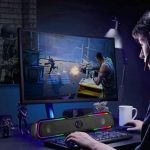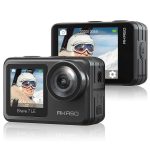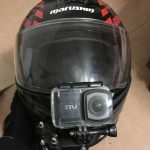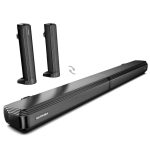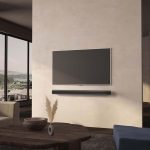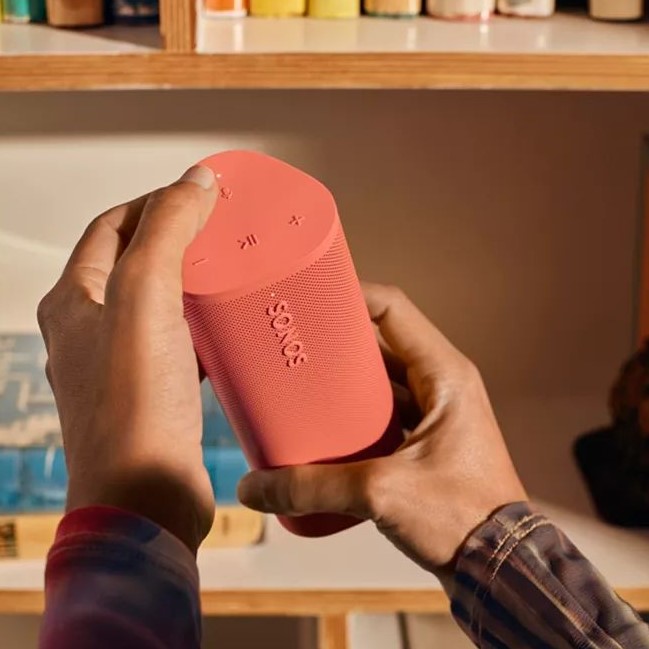Why Choose a Best VR Headset for Sim Racing?
A best VR headset for sim racing transforms traditional gaming into an immersive experience. These devices combine cutting-edge technology with realistic visuals to replicate actual driving conditions. The term “best VR headset for sim racing” refers to headsets designed specifically for this purpose, offering low latency, high resolution, and ergonomic comfort. For instance, they provide 360-degree views of tracks, enhancing situational awareness during races. Additionally, these headsets integrate seamlessly with steering wheels and pedals, creating a cohesive setup. Understanding why these headsets are essential helps you make informed decisions when selecting one.

Transitioning from conventional monitors to VR headsets highlights their ability to enhance realism and engagement in sim racing. Beyond entertainment, they also serve as valuable training tools for aspiring racers by replicating real-world scenarios accurately. By investing in a top-tier VR headset, you prioritize both performance and enjoyment while staying ahead of trends in virtual reality gaming.
Key Features to Look for in VR Headsets for Sim Racing
When searching for the best VR headset for sim racing, several features stand out as must-haves. First, focus on display quality—high resolutions ensure sharp visuals that reduce eye strain during extended sessions. Second, consider refresh rates; faster refresh rates minimize motion sickness and improve responsiveness. Third, evaluate field of view (FOV); wider angles create more immersive experiences by mimicking human vision closely.
Additionally, pay attention to weight distribution and padding materials for prolonged wear comfort. Wireless connectivity options eliminate cable clutter, allowing freer movement while seated. Lastly, compatibility with popular platforms like PC or consoles ensures seamless integration into existing setups. Combining these factors guarantees you find a headset tailored to your specific needs. Modern innovations, such as adjustable IPD settings or integrated audio systems, further enhance usability and satisfaction.
Benefits of Immersive Sim Racing Experiences
Immersive sim racing experiences offered by VR headsets bring numerous advantages beyond mere entertainment. For example, they help develop reflexes and decision-making skills under pressure, which translates well into real-life driving scenarios. Moreover, these headsets allow users to practice on diverse tracks without leaving home, saving time and resources associated with physical travel.
The psychological impact of using VR headsets cannot be overlooked. Users report feeling more engaged and motivated due to the heightened sense of presence provided by virtual environments. Transitioning from passive observation to active participation fosters deeper connections with the sport, encouraging continuous improvement. Many enthusiasts claim VR simulators have become integral parts of their training routines, bridging gaps between theory and practice effectively. This level of immersion enhances both skill development and enjoyment.
Popular Trends in High-Performance VR Headsets
Advancements in Resolution for Enhanced Visuals
Recent trends highlight significant improvements in resolution, with modern VR headsets featuring OLED displays. These screens deliver vibrant colors and deep blacks, enhancing overall visual fidelity. Sharper images reduce eye strain during extended sessions, making them ideal for immersive experiences like sim racing. The clarity provided by these displays ensures users can fully appreciate every detail of their virtual environment.

Inside-Out Tracking Systems for Simplicity
Inside-out tracking systems have replaced external sensors, simplifying installation processes dramatically. This technology uses onboard cameras to map the user’s surroundings without requiring additional hardware. As a result, setup times decrease, and clutter from external devices is eliminated. This advancement makes high-performance VR headsets more accessible for beginners and seasoned enthusiasts alike.
Eye-Tracking Technology for Dynamic Optimization
Some advanced VR headsets now incorporate eye-tracking technology, offering dynamic render quality based on where the user is looking. By focusing rendering power on the gaze point, these headsets improve performance while maintaining visual quality. This feature not only enhances realism but also conserves system resources, leading to smoother operation and longer battery life in wireless models.
Modular Designs for Customization and Longevity
Modular designs represent another growing trend, allowing users to upgrade individual components such as lenses or audio modules. This flexibility extends the lifespan of VR headsets, reducing the need for frequent replacements and lowering long-term costs. For example, upgrading lenses can correct vision issues or enhance field-of-view, while swapping out audio modules improves sound quality without replacing the entire device.
Customizable Options Reflecting Consumer Preferences
Transitioning from rigid constructions to customizable options reflects evolving consumer preferences for personalization and adaptability. Users can tailor their headset experience to match specific needs, whether prioritizing comfort, performance, or aesthetics. Adjustable straps, interchangeable faceplates, and variable IPD settings are just a few examples of how manufacturers cater to diverse demands.
Firmware Updates for Continuous Improvement
Manufacturers frequently release firmware updates to enhance functionality and address bugs, ensuring longevity and relevance for their products. These updates often introduce new features, improve tracking accuracy, or optimize compatibility with emerging software platforms. Regular updates keep headsets aligned with current standards, future-proofing them against rapid technological advancements.
Lightweight Materials for Comfort During Prolonged Use
Lightweight materials are becoming increasingly common in high-performance VR headsets. Carbon fiber composites and other advanced materials reduce weight without compromising durability. This shift enhances comfort during prolonged use, preventing fatigue and allowing users to enjoy extended gaming or training sessions effortlessly.

Improved Ergonomics for Enhanced User Experience
Ergonomic improvements focus on distributing weight evenly across the head and improving ventilation. Redesigned headbands and breathable padding materials ensure better airflow, reducing overheating and sweat buildup. These enhancements make headsets more comfortable for continuous use, appealing to both casual gamers and professional sim racers.
Wireless Connectivity for Greater Freedom
Wireless connectivity options continue to gain traction, eliminating cable clutter and enabling freer movement. Modern headsets leverage Wi-Fi 6 or dedicated transmitters for low-latency connections, ensuring smooth performance even in complex simulations. This convenience appeals to users seeking untethered freedom without sacrificing speed or reliability.
Addressing Common Concerns About VR Headsets for Sim Racing
Potential buyers sometimes raise questions about motion sickness, setup complexity, or affordability regarding VR headsets for sim racing. Advanced technologies address motion sickness concerns through smoother frame rates and better spatial mapping. Setup procedures have become increasingly intuitive thanks to plug-and-play functionalities and pre-configured software packages.
Affordability challenges are mitigated by exploring mid-range options that balance cost with quality effectively. Reputable brands frequently release budget-friendly editions without compromising core functionalities. Transitioning from initial doubts to informed decisions empowers smarter purchasing choices. Manufacturers often include warranties or return policies, providing peace of mind before committing to a purchase. Additionally, responsive customer support teams address lingering concerns post-purchase, ensuring long-term satisfaction.
Compatibility Considerations for Racing Simulator Accessories
Compatibility plays a crucial role in ensuring optimal performance when pairing VR headsets with racing simulator accessories. Steering wheels, pedals, and shifters must synchronize seamlessly with headsets for smooth operation. For example, haptic feedback systems in steering wheels complement VR visuals by simulating road textures and impacts realistically. Bluetooth or USB-C connections simplify linking multiple peripherals together, reducing potential compatibility issues.
Transitioning between accessories requires careful planning to maintain consistency across all elements of the setup. Ensuring compatibility beforehand prevents frustration and enhances overall satisfaction levels. Many modern headsets come equipped with passthrough cameras, allowing quick transitions between virtual and physical controls if needed. This hybrid functionality adds another layer of convenience, making it easier to adjust settings or monitor surroundings during breaks.

Maintenance Tips for Long-Lasting VR Headsets
Proper maintenance extends the lifespan of your best VR headset for sim racing significantly. Regular cleaning removes dirt and oils that accumulate on lenses and straps, preserving clarity and comfort. Use microfiber cloths or specialized solutions recommended by manufacturers to avoid scratches or damage. If exposed to moisture, allow the headset to air dry naturally instead of using heat sources, which might warp materials.
Storing headsets correctly also contributes to their longevity. Invest in protective cases or stands to shield them from dust and accidental drops. Periodically inspect for signs of wear and tear, addressing minor repairs promptly to prevent further damage. With diligent care, your VR headset remains functional and visually appealing for years to come. Consistent upkeep ensures maximum value from your investment, whether for casual gaming or competitive simulations.
Enhancing Realism Through Advanced VR Technology
Advanced VR technology elevates sim racing experiences by incorporating innovative features that mimic real-world physics and sensations. Haptic feedback, force feedback steering, and vibration motors simulate tire grip, surface changes, and collisions authentically. These tactile cues enhance realism, immersing users deeper into the virtual environment.
In addition to physical feedback, auditory enhancements play a significant role in creating lifelike scenarios. Spatial audio systems replicate engine roars, tire screeches, and crowd noises directionally, adding depth to the experience. Transitioning from basic sound effects to advanced audio processing showcases technological progress within the industry. Modern headsets often include built-in microphones and speakers, eliminating the need for separate headsets and streamlining configurations further.
Addressing User Challenges and Enhancing Satisfaction
Potential challenges with VR headsets for sim racing include calibration adjustments, software integrations, or hardware limitations. Calibration tools included with most headsets simplify aligning visuals with physical controls, ensuring precise alignment every time. Software updates regularly improve compatibility with new games and features, keeping setups up-to-date effortlessly.
Hardware limitations are addressed through expandable ports or modular designs, allowing easy upgrades as technology evolves. Transitioning from initial setup phases to ongoing usage becomes smoother with thorough preparation and understanding of available options. Manufacturers frequently offer troubleshooting guides or live support, resolving common issues quickly and efficiently. Educating yourself about available resources boosts confidence in your selection process and maximizes long-term satisfaction.

Final Thoughts
A best VR headset for sim racing represents the pinnacle of immersion and precision in virtual driving. From advanced displays to ergonomic designs, these headsets cater to every enthusiast’s needs in 2025. Throughout this article, we’ve explored critical aspects of selecting appropriate VR headsets, including key features, benefits, and maintenance tips.
By incorporating a high-quality VR headset into your sim racing setup, you embrace a smarter approach to achieving realistic and enjoyable experiences. Remember, whether opting for premium models or affordable alternatives, prioritizing compatibility and comfort remains essential. So why wait? Explore available choices today and discover what makes VR headsets indispensable for enhancing your virtual adventures. Let these cutting-edge devices redefine how you experience the thrill of racing from the comfort of your own space. Focusing on innovation and practicality ensures long-term satisfaction while staying ahead of technological advancements shaping the industry.
